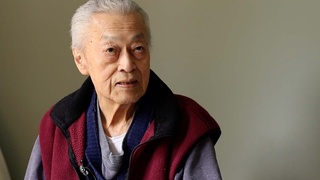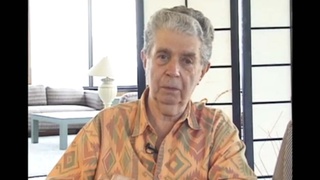Interviews
Okinawan discrimination
Like Okinawan people, those days they were sadly discriminated. I remember that they lived in special area. And they were such nice people. And my mother told me I shouldn’t discriminate them. And so I became good friends with couple of Okinawa-ken girls. And at school, the other students, the Naichi girls—you know what the Naichi is, the Naichi people who came from mainland Japan. You know the Hiroshima, Yamaguchi or the non-Okinawans whose parents came from the main island of Japan—they were called Naichi. And so, because I played with the Okinawan people—they pulled their hair and they wouldn’t play together—every recess, the Okinawan girls were all alone. But, because my mother had taught me—and I like those girls, they were so nice—I really got along well with them. So, I used to play together with them. So they would pull my hair to punish me.
But, discrimination was terrible in those days. And when I interviewed the Okinawan picture brides, they told me how much they had suffered because some people were so cruel to them.
Date: February 19, 2004
Location: Hawai'i, US
Interviewer: Lisa Itagaki, Krissy Kim
Contributed by: Watase Media Arts Center, Japanese American National Museum.
Explore More Videos

Felt no hostility in Los Gatos, California after the war
(b. 1935) Sansei businessman.

Great grandfather Asato was a sumo wrestler
Okinawan American whose parents are from Peru.

Grandfather loved to tell her stories of her great-grandfather Arakaki
Okinawan American whose parents are from Peru.

Prosecution of Japanese Peruvians during the war
Okinawan American whose parents are from Peru.

Parents leaving Peru to move to California
Okinawan American whose parents are from Peru.

Reflections on childhood
Okinawan American whose parents are from Peru.


Facing housing discrimination in Rhode Island
(1934–2018) Japanese American designer, educator, and pioneer of media technologies

Influence of Mexican culture after returning from camp
(b. 1943) Japanese American transgender attorney

A conversation with a farmer in Kansas
(b. 1939) Japanese American painter, printmaker & professor

Dancing in Japan as an American, in the US as Japanese
(1918-2023) Nisei Japanese kabuki dancer

Discrimination in San Francisco
(1914–2015) Nisei YMCA and Japanese American community leader

Collection of artifacts depicting racial stereotypes influences art
(b. 1939) Japanese American painter, printmaker & professor

Encountering racial discrimination at a public swimming pool
(b. 1923) Nisei from Washington. Resisted draft during WWII.

His testimony has more credibility because of his race
(1922 - 2005) Former U.S. Army counterintelligence officer
